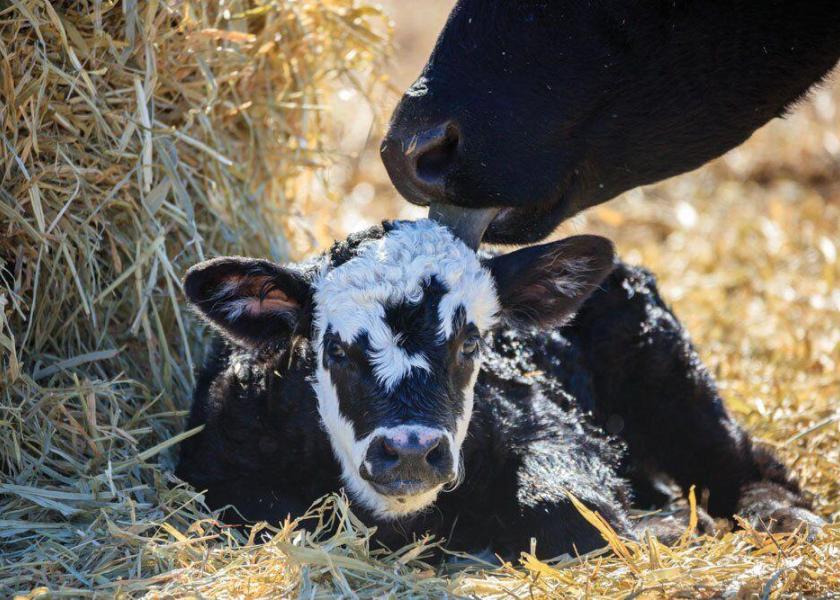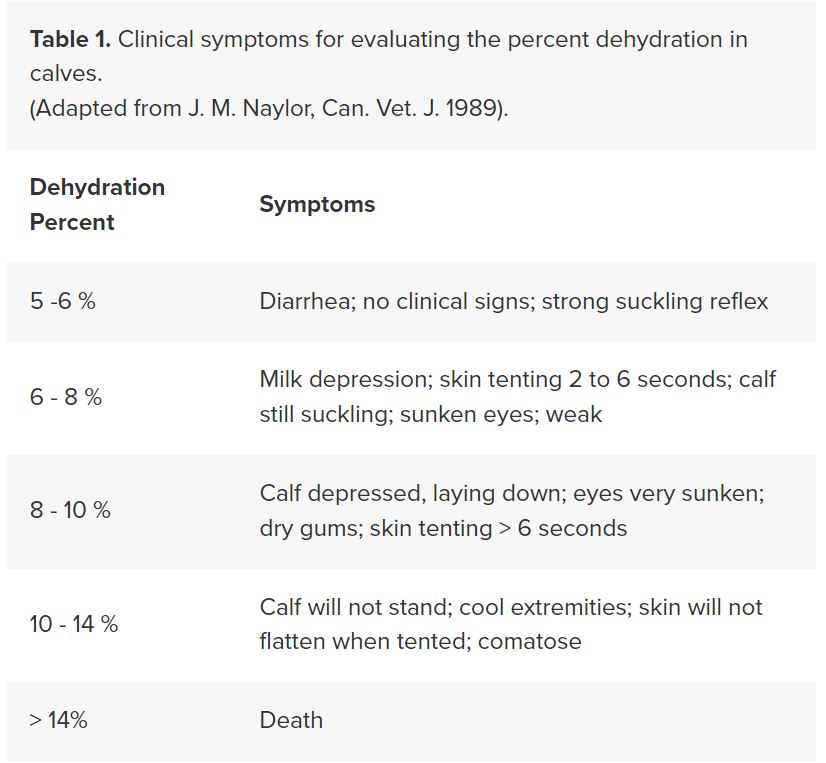How To Give a Calf Electrolytes, The Dehydration Lifeline

With calving season in full swing, the health of young calves in the herd may be plagued by extreme weather events or sickness, such as diarrhea or scours. While colostrum and milk are the best nutrition, sometimes calves could use a boost of electrolytes to get back up and going. Here’s a look at what’s in electrolyte products, how much electrolytes should be given and a few ways on how to give electrolytes to a calf.
What is in Calf Electrolytes?
Oral fluids are made up of a combination of sodium, energy, amino acids and alkalizing agents—formulated to help replenish fluids and combat metabolic problems in a dehydrated calf, including acidosis and electrolyte losses associated with diarrhea, or scours, explains an article by Hubbard Feeds, an Alltech company.
According to the article, the most important part of a rehydration solution is water, followed by these key ingredients:
•Sodium— Dehydrated calves secrete sodium. As water and sodium are closely linked, water follows sodium where it goes—therefore improved sodium absorption in the small intestine promotes water absorption.
•Energy—A simply sugar, such as dextrose (glucose) provides quick energy to the calf and assists with sodium absorption.
•Amino Acids—Glycine is a non-essential amino acids, assisting in glucose absorption.
•Alkalizing Agents—Acetate, bicarbonate, propionate, citrate or lactate are common agents added to help reverse any metabolic acidosis that may be occurring within the calf.
•Electrolytes—Potassium and chloride are often also included in oral rehydration products in order to maintain blood pH and assist with other metabolic functions.
•Gelling agents—Psycillium husk, pectin, guar gum and other gums help thicken the manure in an attempt to reduce diarrhea and increase fluid retention.
While electrolytes serve a great purpose, they are a supplement and should be fed several hours after milk feedings and given once every 12 hours as needed. Additionally, electrolyte products should never be mixed with milk or milk replacer, as this will not fulfill the amount of fluid (water) the calf needs to rehydrate.
How Much Electrolytes Should You Give a Calf?
According to Hubbard Feeds, the amount of electrolyte product a dehydrated calf needs to rehydrate is based on calf bodyweight and dehydration percent.
Dehydration percentage is explained in following table:
Here’s how to calculate a calf’s needs:
• Weight of calf multiplied by dehydration percentage = lbs. of water lost, then
• Lbs. of water lost divided by 2 = quarts of liquid lost, then
• Quarts of liquid lost divided by 2 = electrolyte solution total needed, in quarts
For example, if a 100 lb. calf is estimated to be 8% dehydrated, it will have lost 100 x 0.08 = 8 lb. water, or 4 quarts of liquid. To replace the water lost due to scouring, the calf will need to replenish approximately half of the lost water, about 2 quarts of electrolytes, in addition to normal milk or milk replacer feeding intake.
How to Give Electrolytes to a Calf
The two most common ways to administer electrolytes are through oral fluids, using a nipple bottle or esophageal tube feeder, and intravenous fluid therapy (IV).
While giving a calf an IV is efficient and effective in a severe dehydration case, it does take specific skills, equipment and supplies. Milk Specialties Global Animal Nutrition shares the proper equipment and protocol for administering intravenous fluids.
A cost-effective route to rehydrate cattle with mild or moderate dehydration is oral fluids. Oral fluids should be mixed according to label directions and used with water around the temperature of 105 to 110 degrees Fahrenheit. These can be easily administered in a barn, calving shed or out in the calving pasture or lot.
For a calf that shows a strong suckle reflex, oral fluids may be given through a nipple bottle. However, in cases where a calf is too weak or ill to have the motivation to drink electrolytes, the esophageal tube feeder is an effective tool.
Here’s a look at how esophageal tube feeders should be properly inserted and used to administer oral fluids, provided by Milk Specialties Global Animal Nutrition.
In the event where a calf in your herd starts scouring and show signs of dehydration, electrolytes might make the difference between life and death. Is your cattle supply cabinet stocked and ready?
Other Calving Resources:








